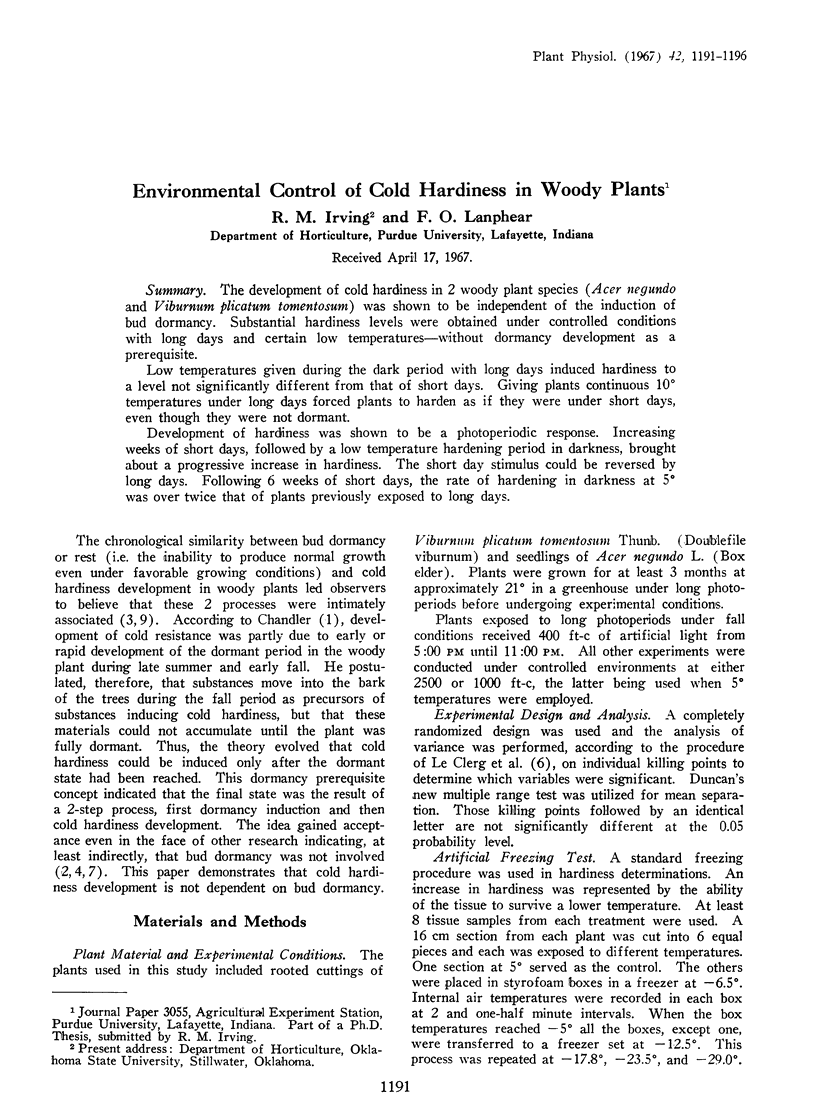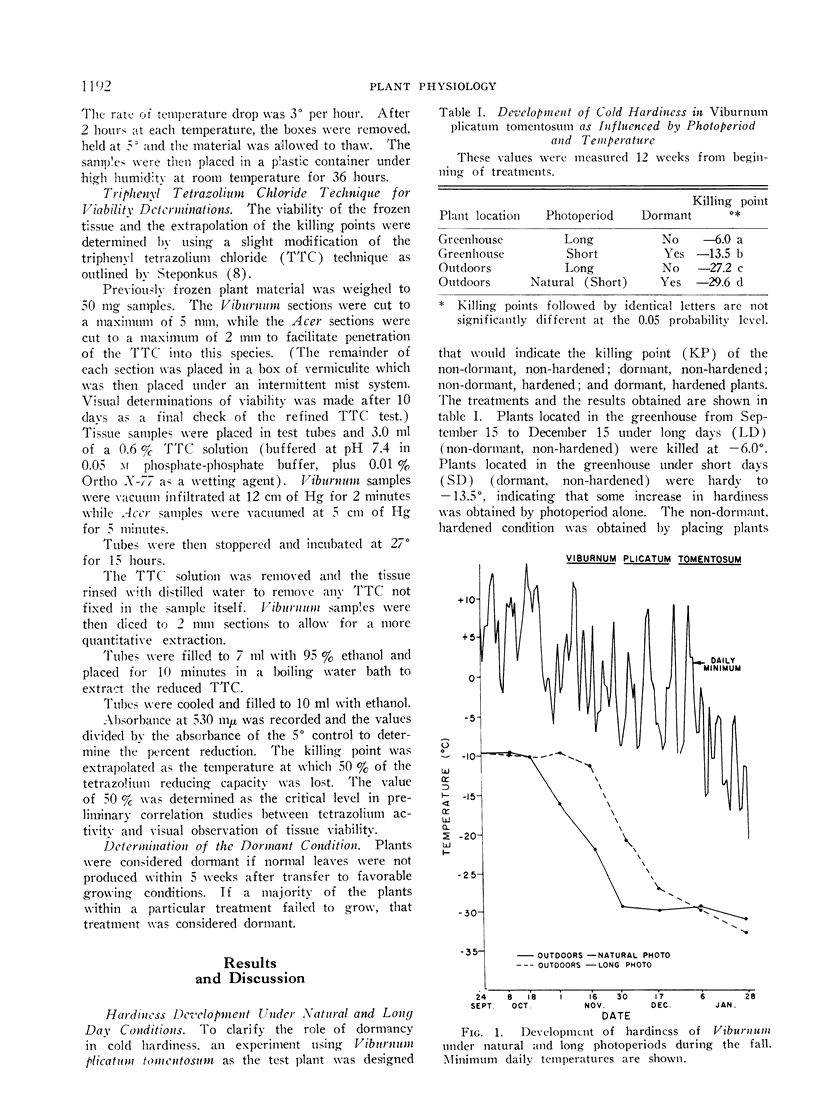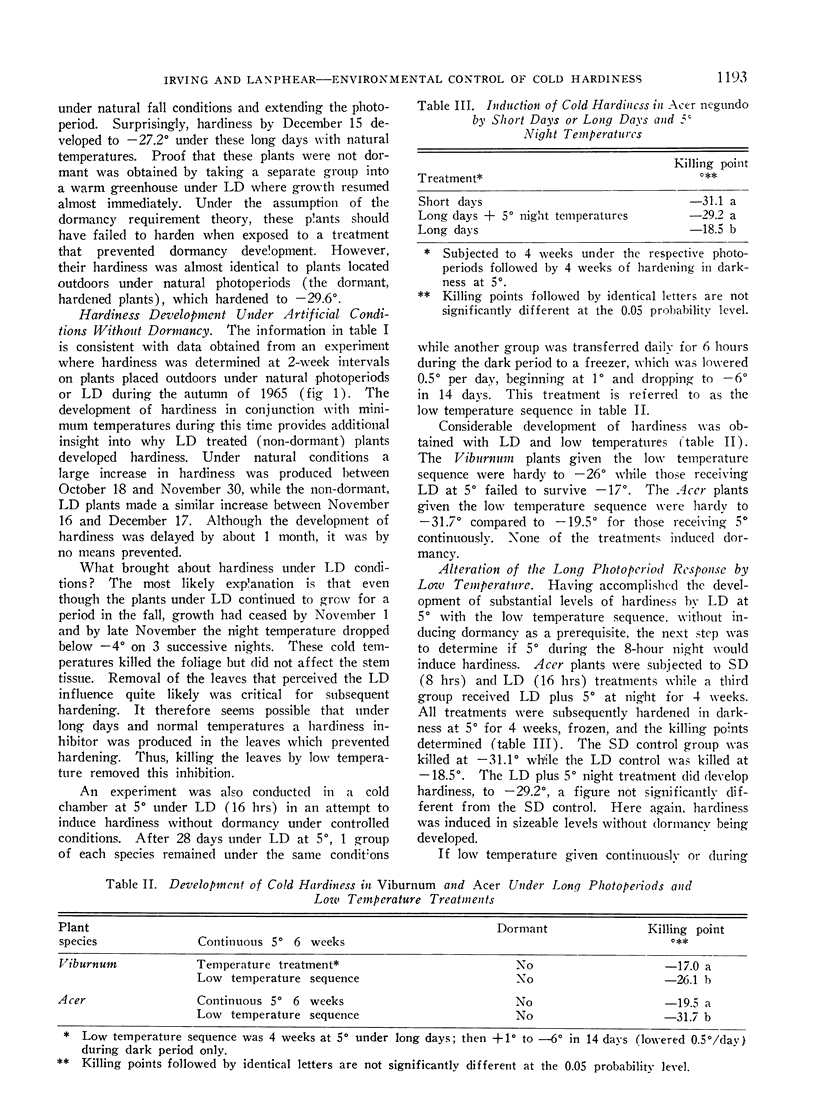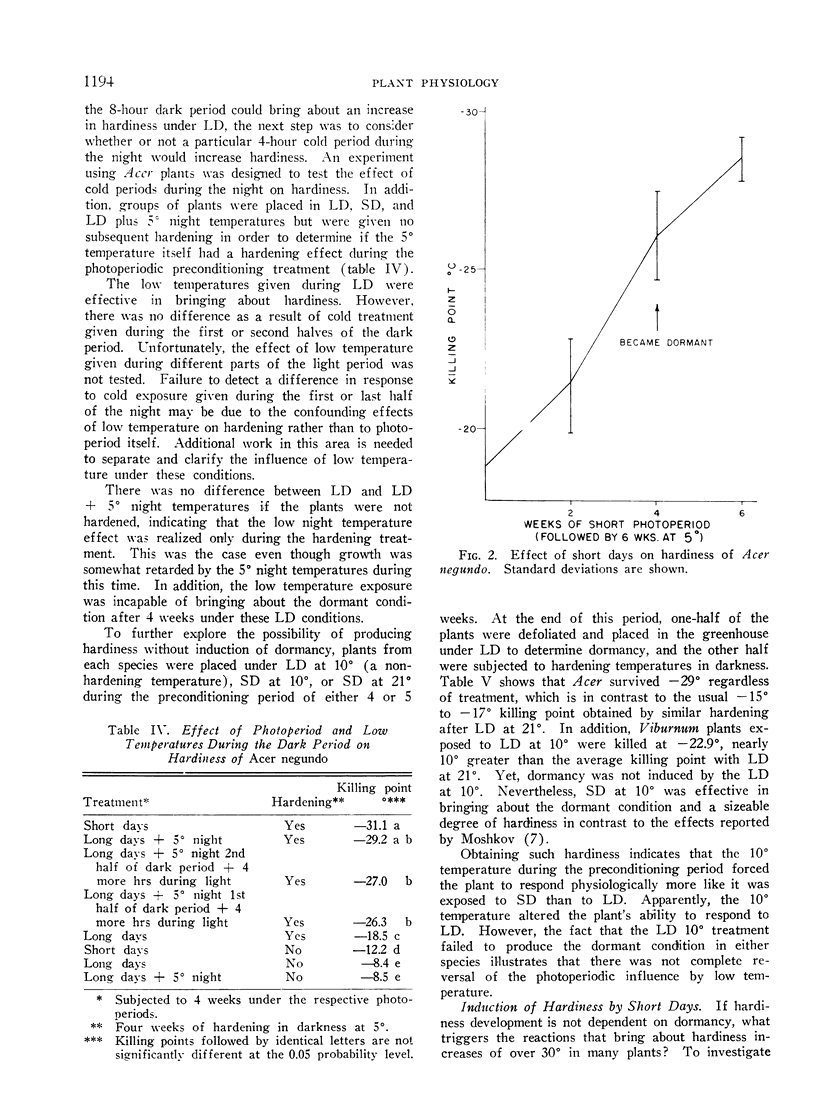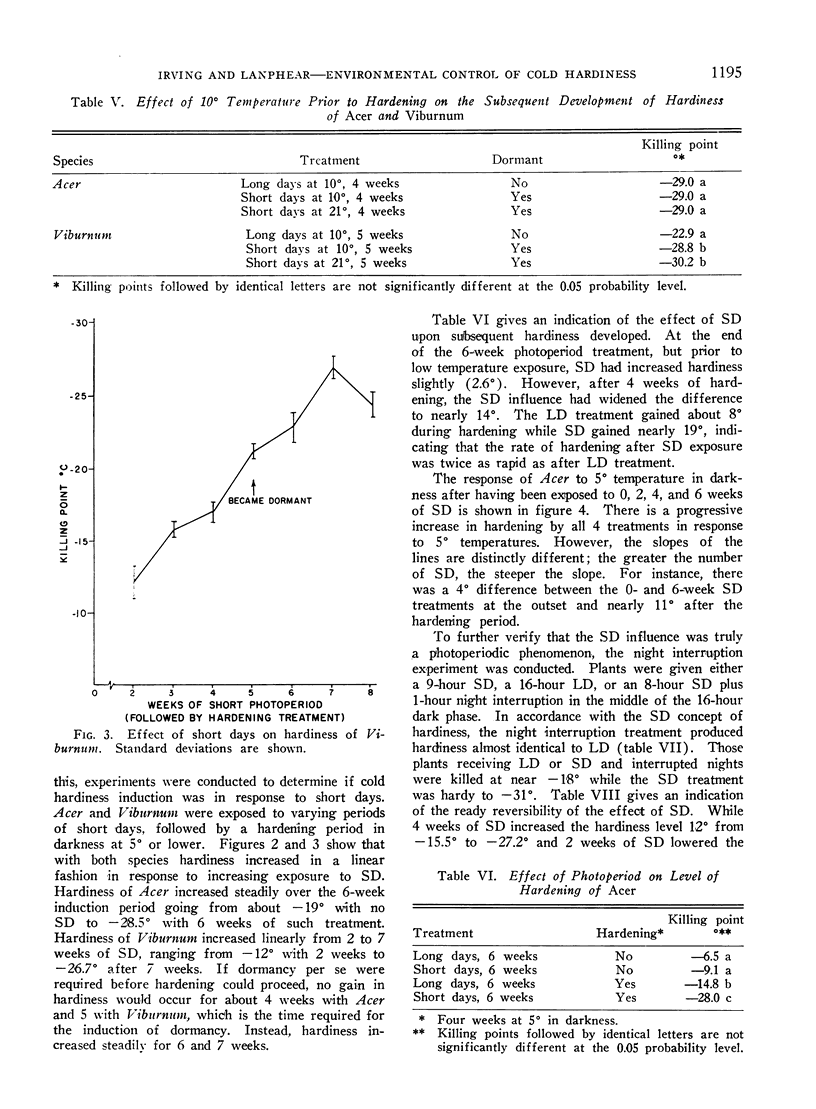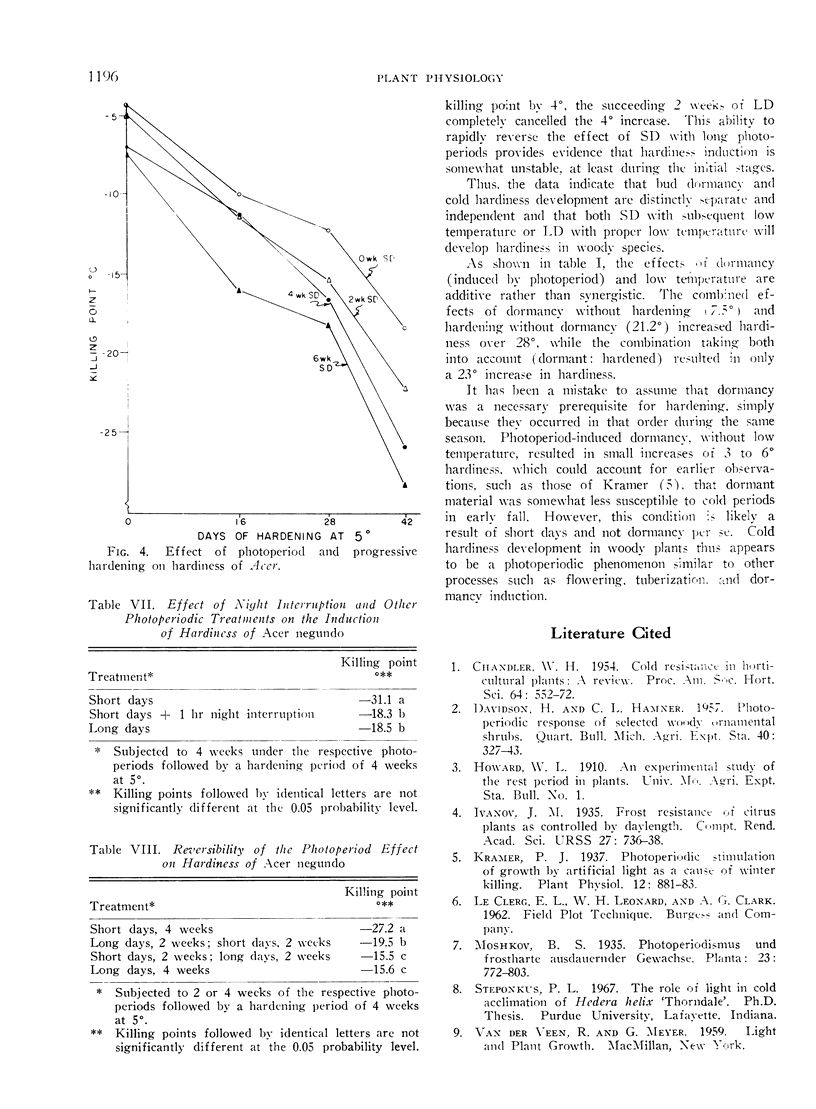Abstract
The development of cold hardiness in 2 woody plant species (Acer negundo and Viburnum plicatum tomentosum) was shown to be independent of the induction of bud dormancy. Substantial hardiness levels were obtained under controlled conditions with long days and certain low temperatures—without dormancy development as a prerequisite.
Low temperatures given during the dark period with long days induced hardiness to a level not significantly different from that of short days. Giving plants continuous 10° temperatures under long days forced plants to harden as if they were under short days, even though they were not dormant.
Development of hardiness was shown to be a photoperiodic response. Increasing weeks of short days, followed by a low temperature hardening period in darkness, brought about a progressive increase in hardiness. The short day stimulus could be reversed by long days. Following 6 weeks of short days, the rate of hardening in darkness at 5° was over twice that of plants previously exposed to long days.
Full text
PDF